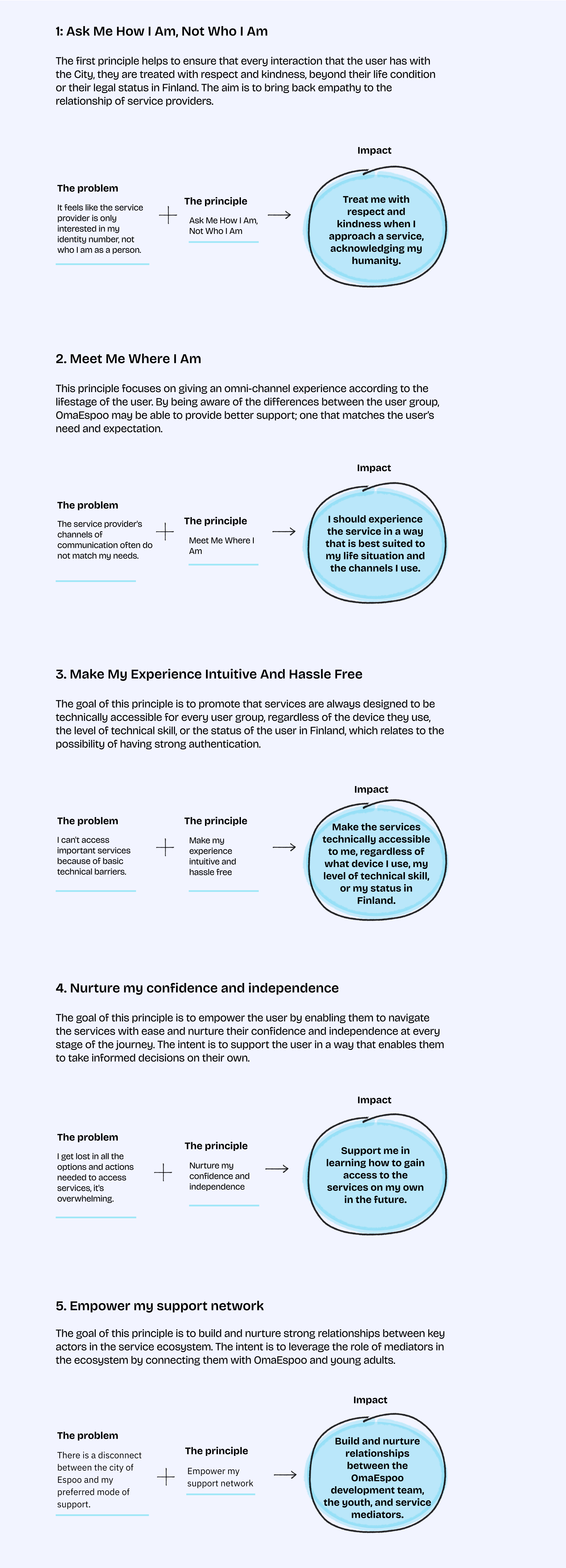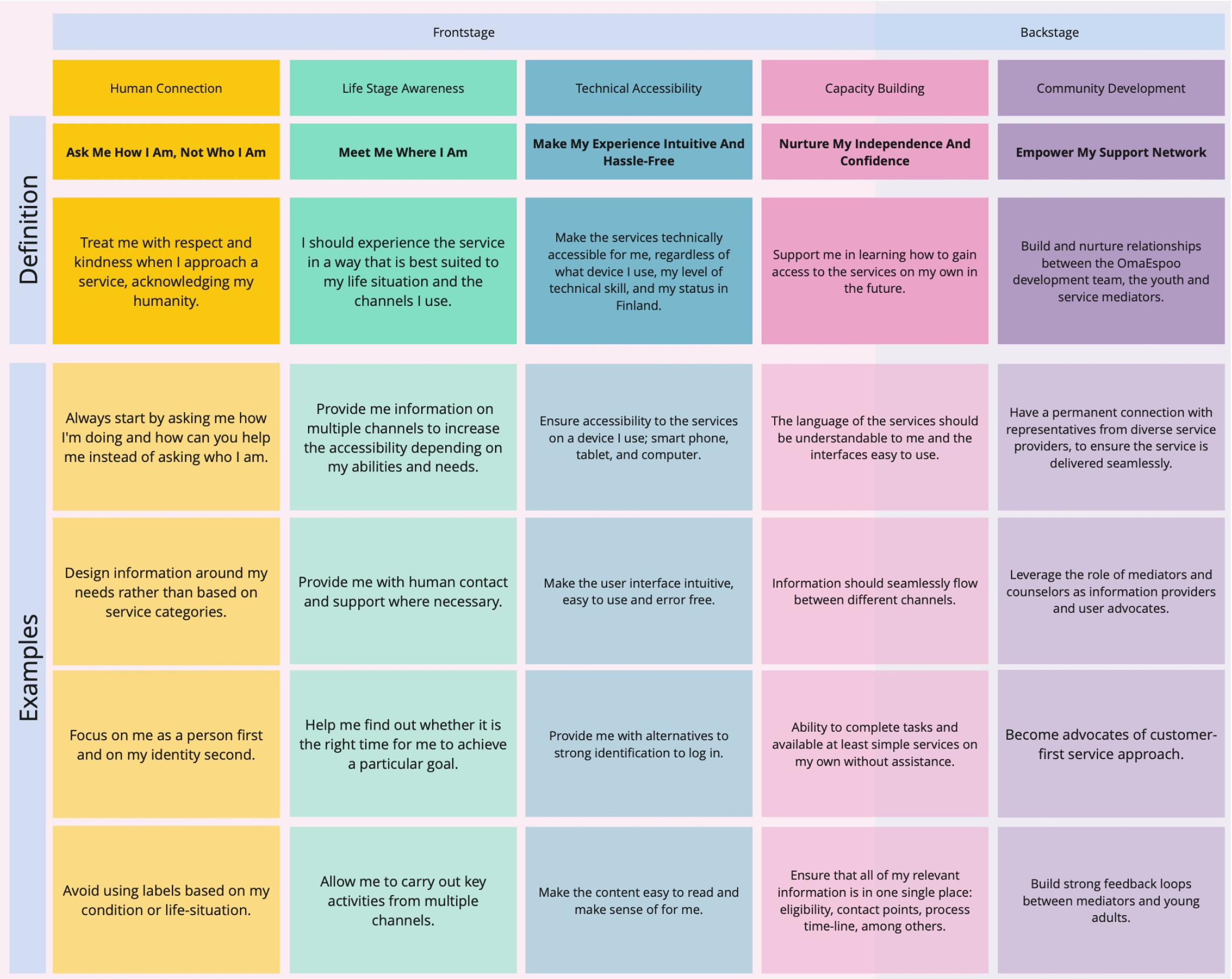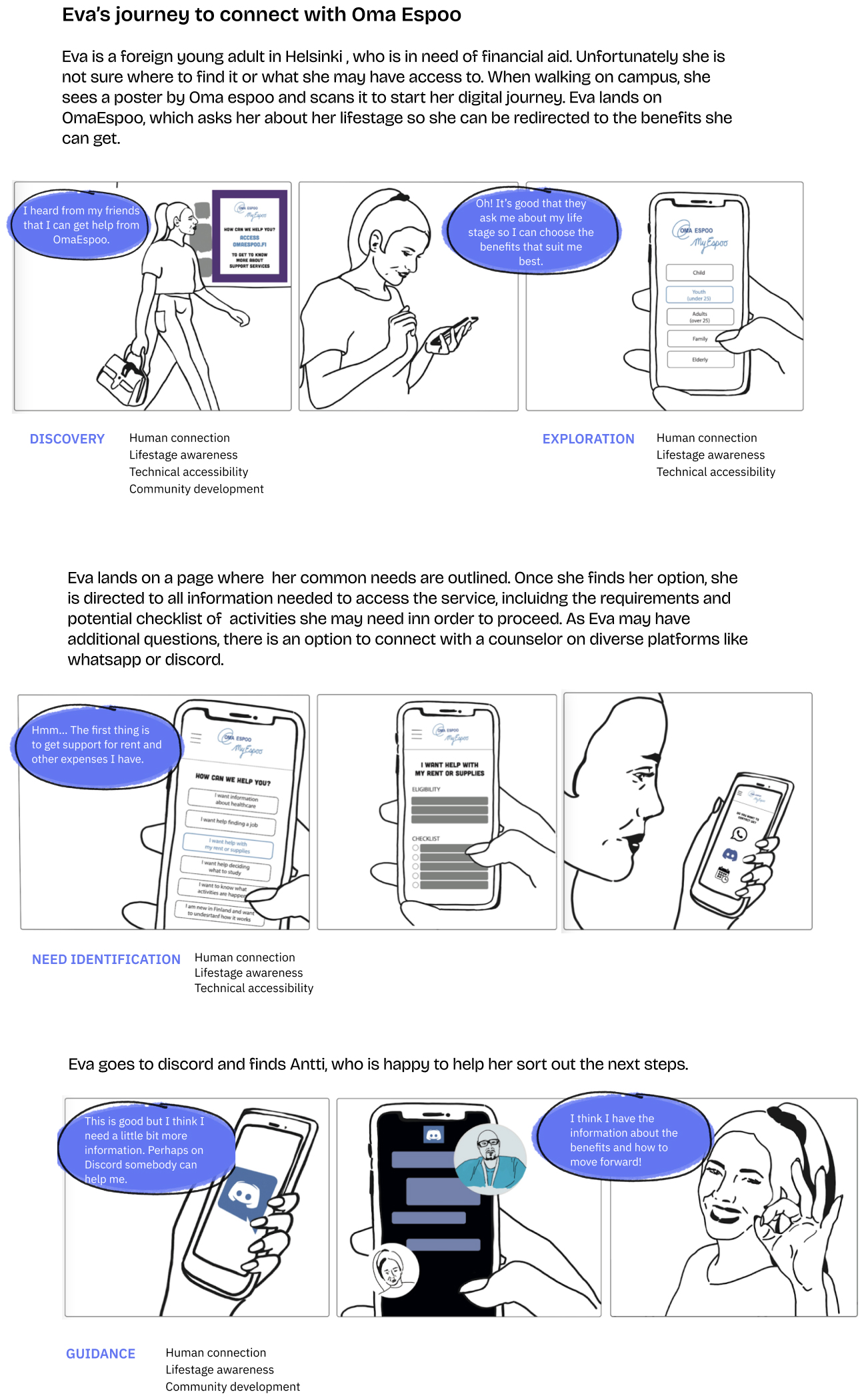Service Design x Design Strategy


To increase inclusivity and participation of young adults (18-24 yrs) in the development of digital portal, functionalities and support services in Oma Espoo. Especially young marginalized adults who have difficulties with digitalization.

The research was divided into three key steps. the first step was to make sense of the initial brief and understand the needs and the goals of the client, city of Espoo. We then moved on to create a holistic understanding of all the relevant actors and stakeholders involved. With a better understanding of the stakeholders and the city of Espoo, we did some reframing for the brief.
Key actors in the service ecosystem

OmaEspoo team leading the platform design
Stakeholder interviews
In - depth interview with the OmaEspoo stakeholders.
The goal of the session was to understand their perception of the target audience and their key challenges to engage with the city.
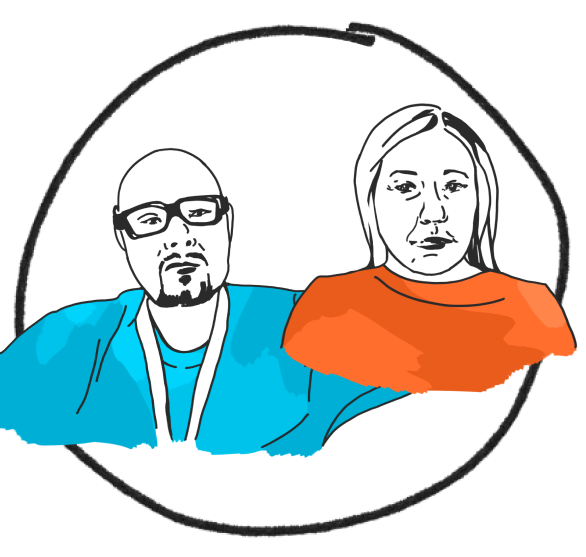
Counselors & mediators from local service providers
Semi- structured interviews
In- depth 1:1 interviews with experts and mediators like counsellors working with young adults.
Expert discussion
Focused group discussion with experts from the city

Young adults finding a way around the system
Online survey + Netnography: To understand key services and used by the young adults and their pain points in accessing those services.
Semi- structured interviews: In- depth 1:1 interviews with with young adults.
1. Reframing the brief
Through our discussions, we discovered that participation was not just related to communication or channels but rather to the way the service was experienced by the users.
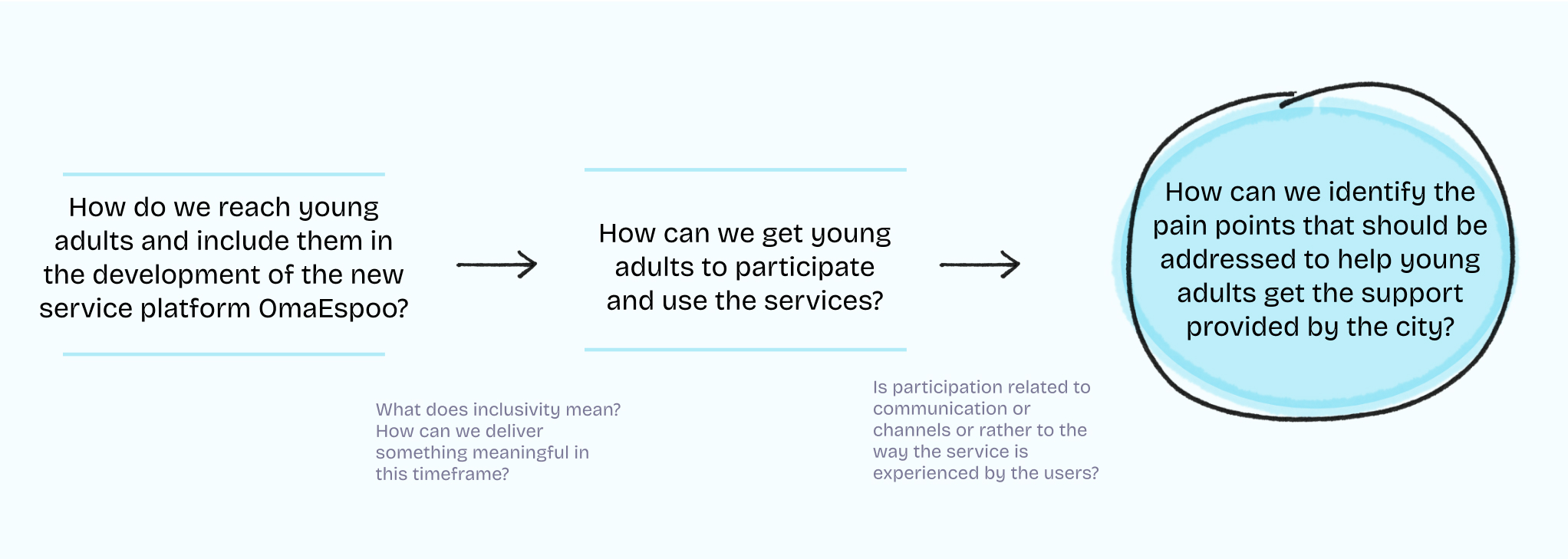
Stages of reframing
2. Affinity mapping
We used affinity mapping as the primary tool to collate and make sense of our research data and lead us towards actionable insights and the final solution. In our affinity diagram, we organized the information into 5 clusters that go from barriers and frustrations to communication channels.
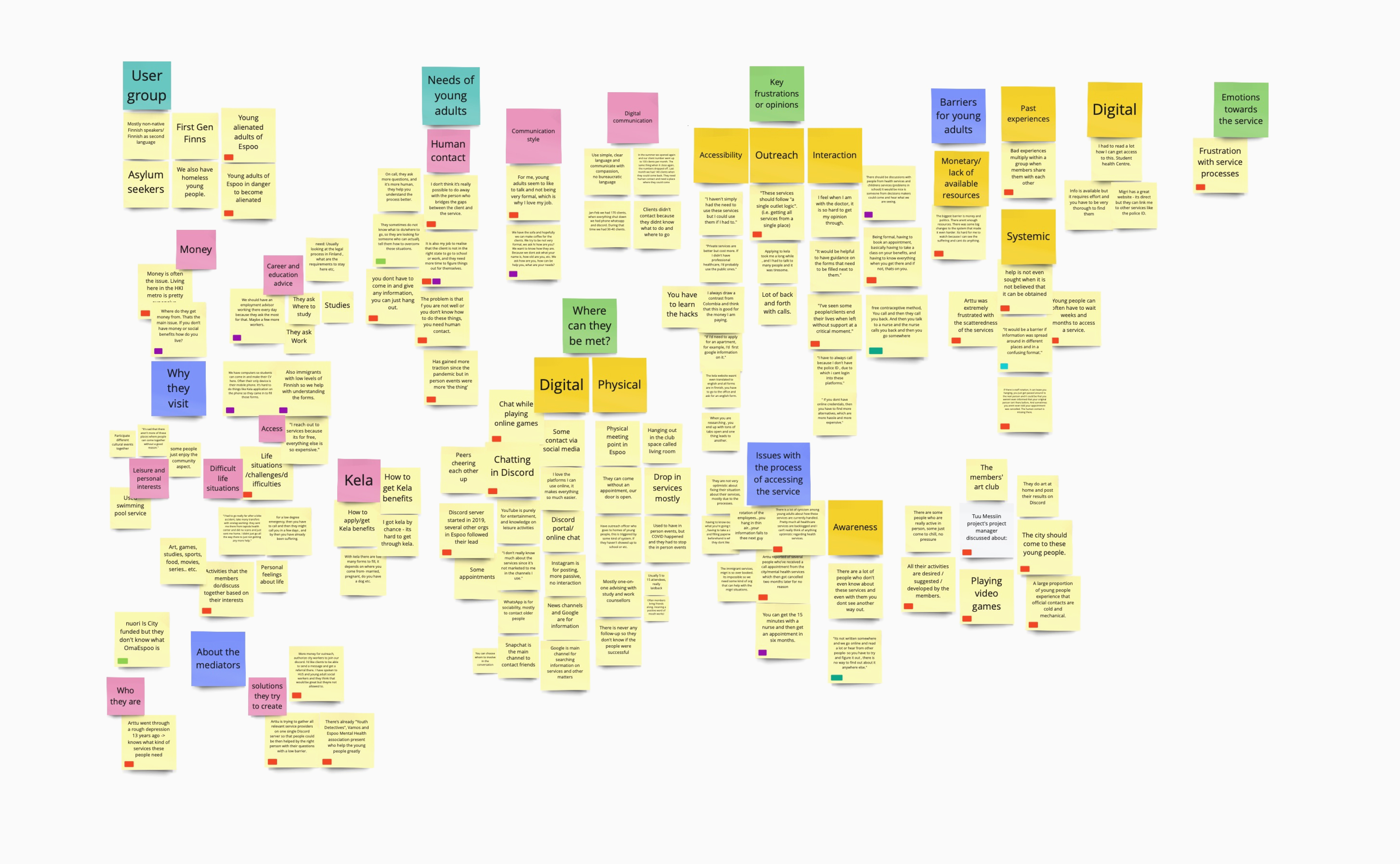
Affinity map
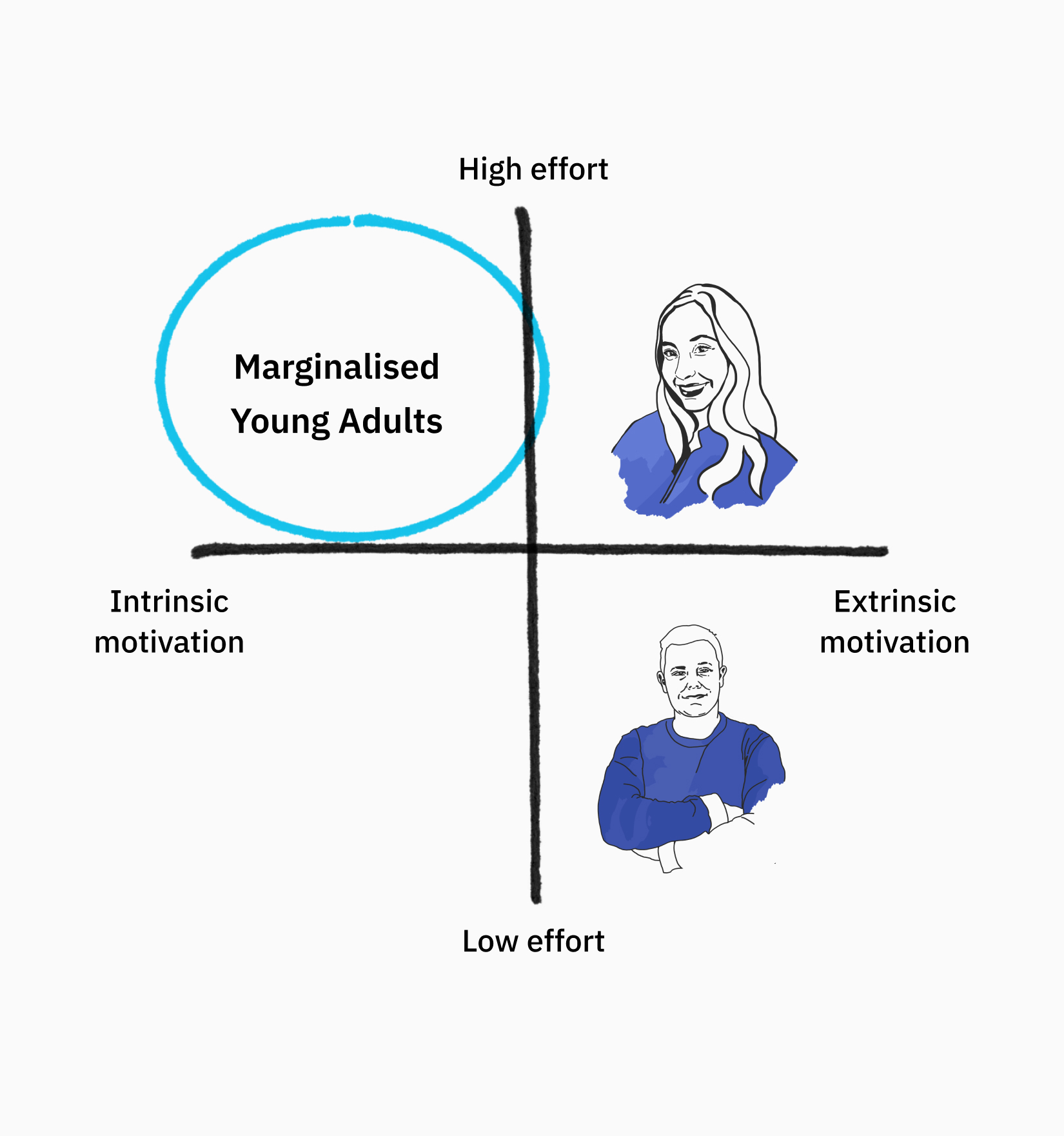
3. User subgroups
We identified different user subgroups which were classified based on the nature of the barrier and the effort required to overcome the barrier to reach out to city services.
Nature of the barrier is defined as intrinsic or extrinsic where the intrinsic barrier is related to the user's personal life stage like mental & physical conditions, life situation and so on.
Extrinsic barriers are related to the context in which the user operates like rules, environment, society, processes and policies that directly impact the user experience with the city services.
We also identified that the most vulnerable users lie in the first quadrant where intrinsic factors create high barriers and require high effort to engage with city services.
4. Customer journey mapping
We also created customer journey maps to understand the end to end story fo the user and identify pain points and drivers in this journey. The hexagons represent the pain points and stars respresent drivers for ths young adult to enagage with city services.
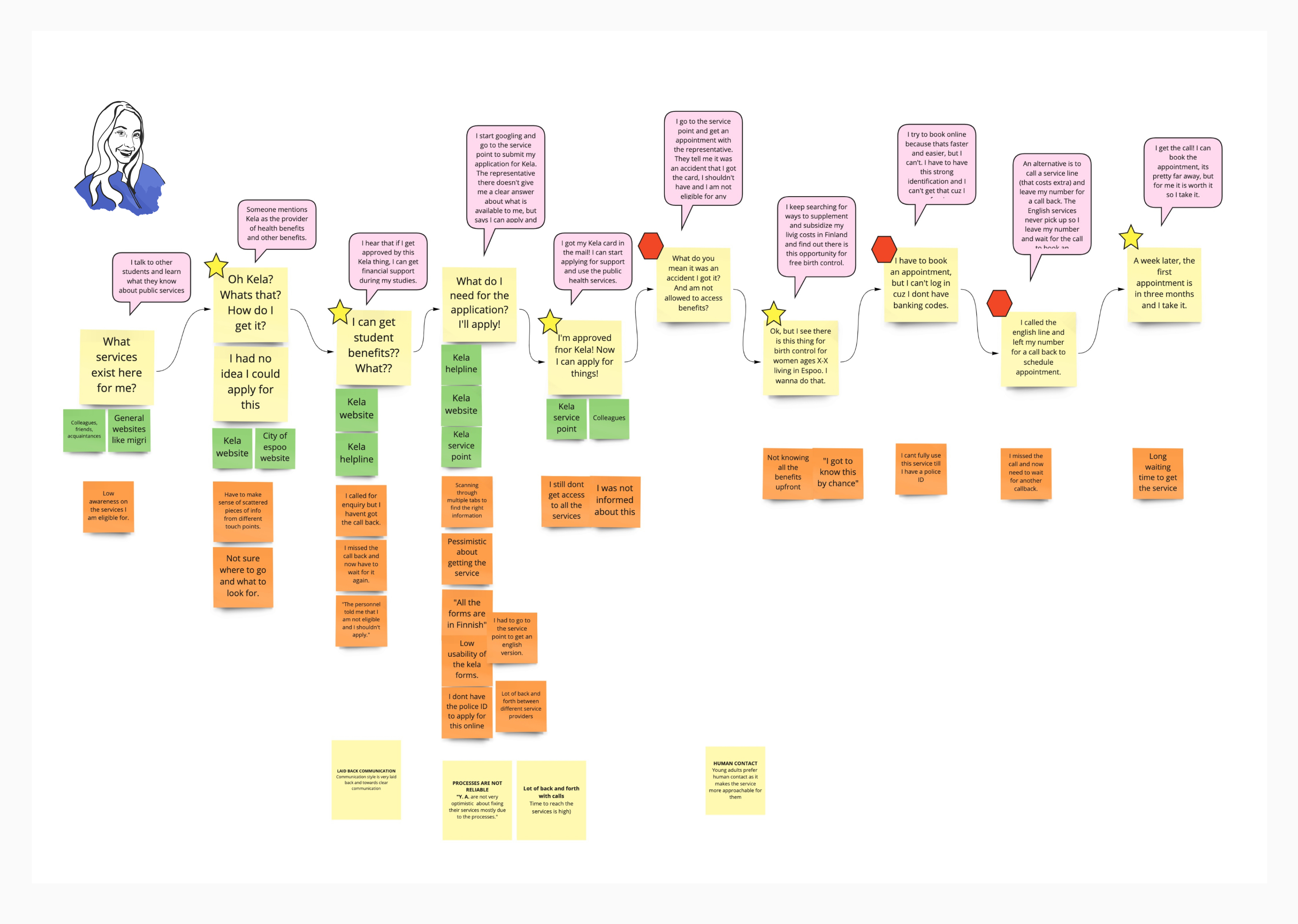
We identified four areas of focus from our research, which also serve as a
baseline for our proposed solution to the city.
Laidback communication
City’s communication style is very laid back and lacks clear communication.
Human contact
Young adults prefer the service to be more humane as it makes the service more approachable for them.
Low reputation and reliability
Young adults are not very optimistic about getting access to the services mostly due to the lengthy processes in place.
Time to reach services is high
There is a lot of back and forth to approach city services especially via calls.
Our journey map gave us good insights into the barriers for an average young adult which we then combined with our insights on barriers faced by marginalized youth and decided to focus on 5 key insights based on the criticality and the prevalence of the problem.
1. The channel of communication most often does not match the need of the user
We also created customer journey maps to understand the end to end story fo the user and identify pain points and drivers in this journey. The hexagons represent the pain points and stars respresent drivers for ths young adult to enagage with city services.
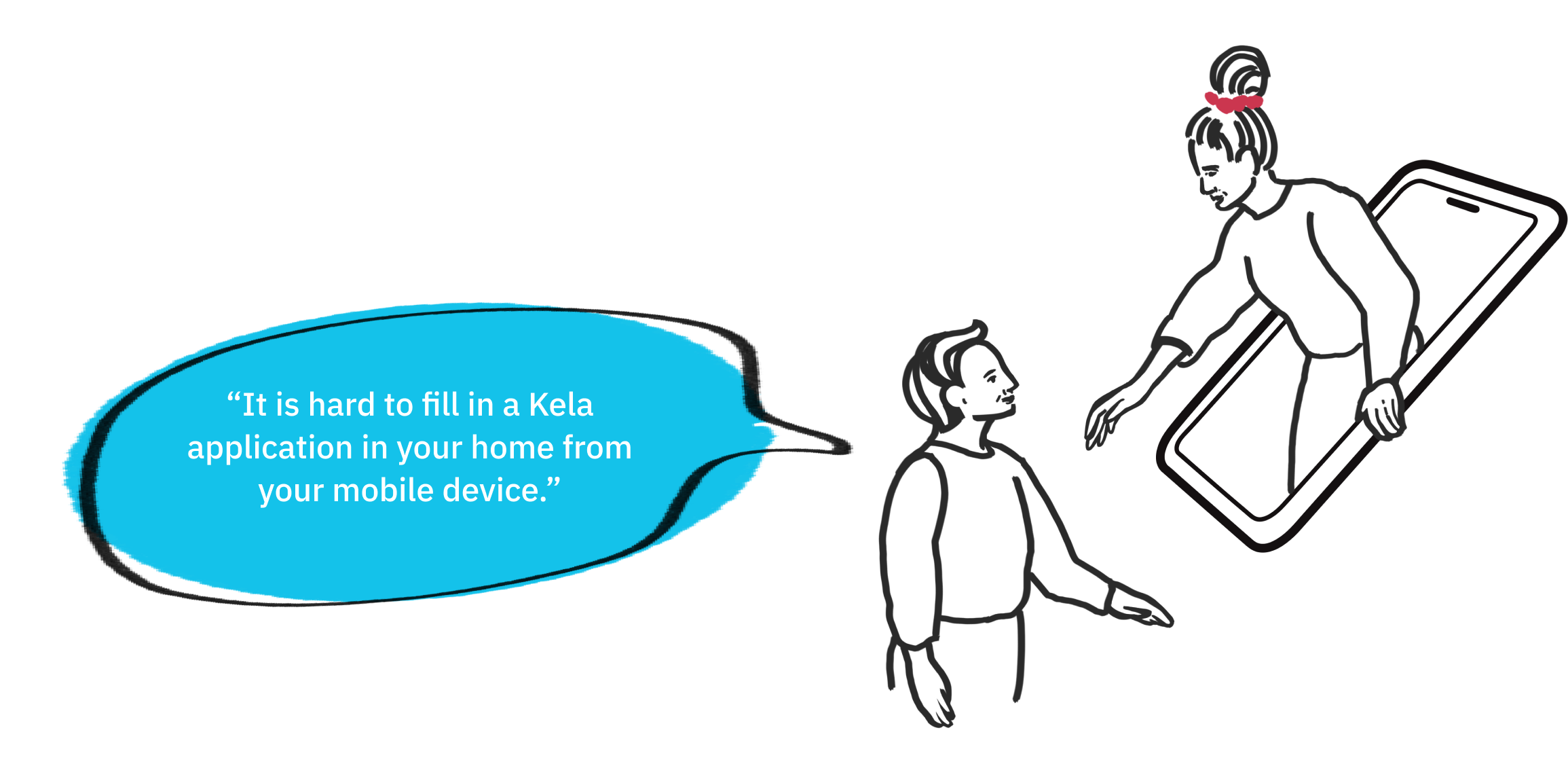
2. Mediators play a crucial role in service access
Mediators establish trust through human connection; by treating youth with respect and dignity. An excellent example of best practices in the field is illustrated by the work done by Ohjaamotalo's staff.
 We have the sofa and hopefully we can make coffee for the clients. We try to be very informal by asking "Hi, how are you?". We want to know how they are. We don't ask what your name is, how old are you instead we ask how are you, how can we help you, what are your needs?
We have the sofa and hopefully we can make coffee for the clients. We try to be very informal by asking "Hi, how are you?". We want to know how they are. We don't ask what your name is, how old are you instead we ask how are you, how can we help you, what are your needs? 
Expert | Ohjaamotalo

3. The reputation of city services influences motivation
The motivation to approach the city service is dependent upon the users’ perception of the system, which is formed by their own past experiences, their peers’ experiences, city’s general reputation and one’s life situation.
A bad reputation creates a high approachability barrier.

 There is a lot of cynicism among young adults about how these services are currently handled. Pretty much all healthcare services are backlogged and I can’t really think of anything optimistic regarding health services.
There is a lot of cynicism among young adults about how these services are currently handled. Pretty much all healthcare services are backlogged and I can’t really think of anything optimistic regarding health services.
Expert | Espoo Mental Health Association
4. Time to reach city services is long and involves a lot of back and forth
There is a lot of back and forth with calls to connect with the city services and get the required information.
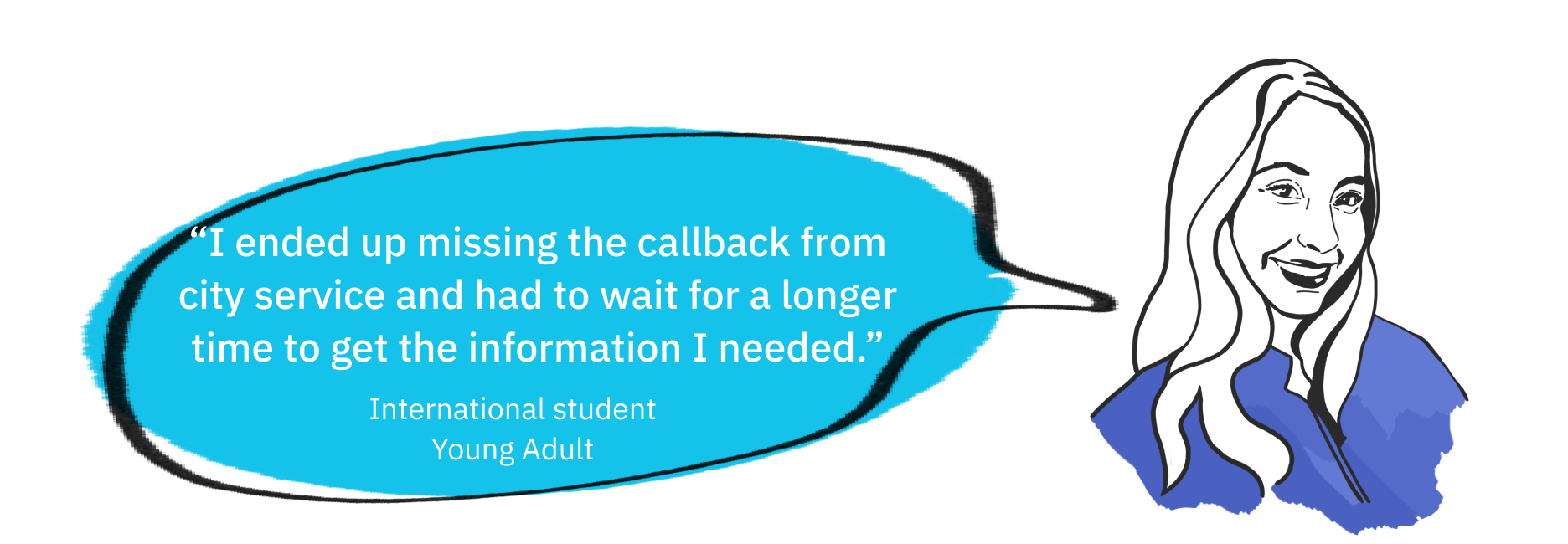
5. Young adults prefer human contact as it makes the service more approachable
The need for human contact while interacting with the city depends on the user’s life situation, need and the urgency of the problem.

 On a call, they ask more questions, and it's more human, they help you understand the process better.
On a call, they ask more questions, and it's more human, they help you understand the process better. 
International student, Young Adult
Our research gave us deeper insights into the barriers faced by regular adults as well as marginalized young adults towards accessing city services. While some barriers were specific to marginalized youth, we realized that most insights can be extended to a larger group of young adults and hold equal relevance in their situation. So, our proposed solution focuses on reducing barriers faced by regular young adults with a focus on marginalized youth.
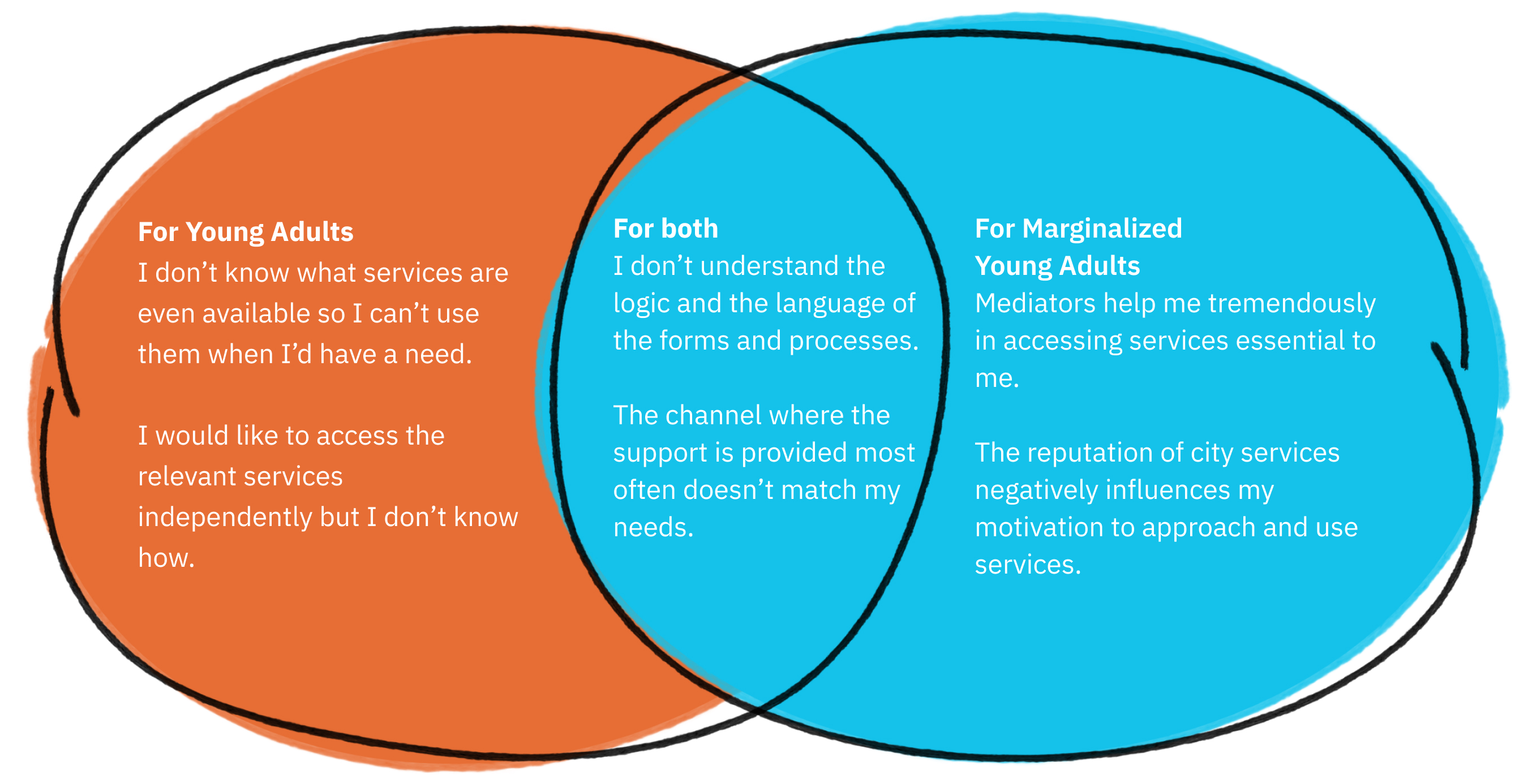
Our solution is a set of 5 service principles which act as guidelines that help service provides like Oma espoo to create seamless and valuable interactions across their entire service ecosystem.
Why Service Principles ?
They aim to contribute to the continuous development of the OmaEspoo service while keeping in mind the diverse teams working together to design the multi-user platform.
The principles connect other important actors - like the mediators in the ecosystem,and allow embracing their role and participation as well.
They also serve as communication tools that allow service designers to spread the mindset across the organization.
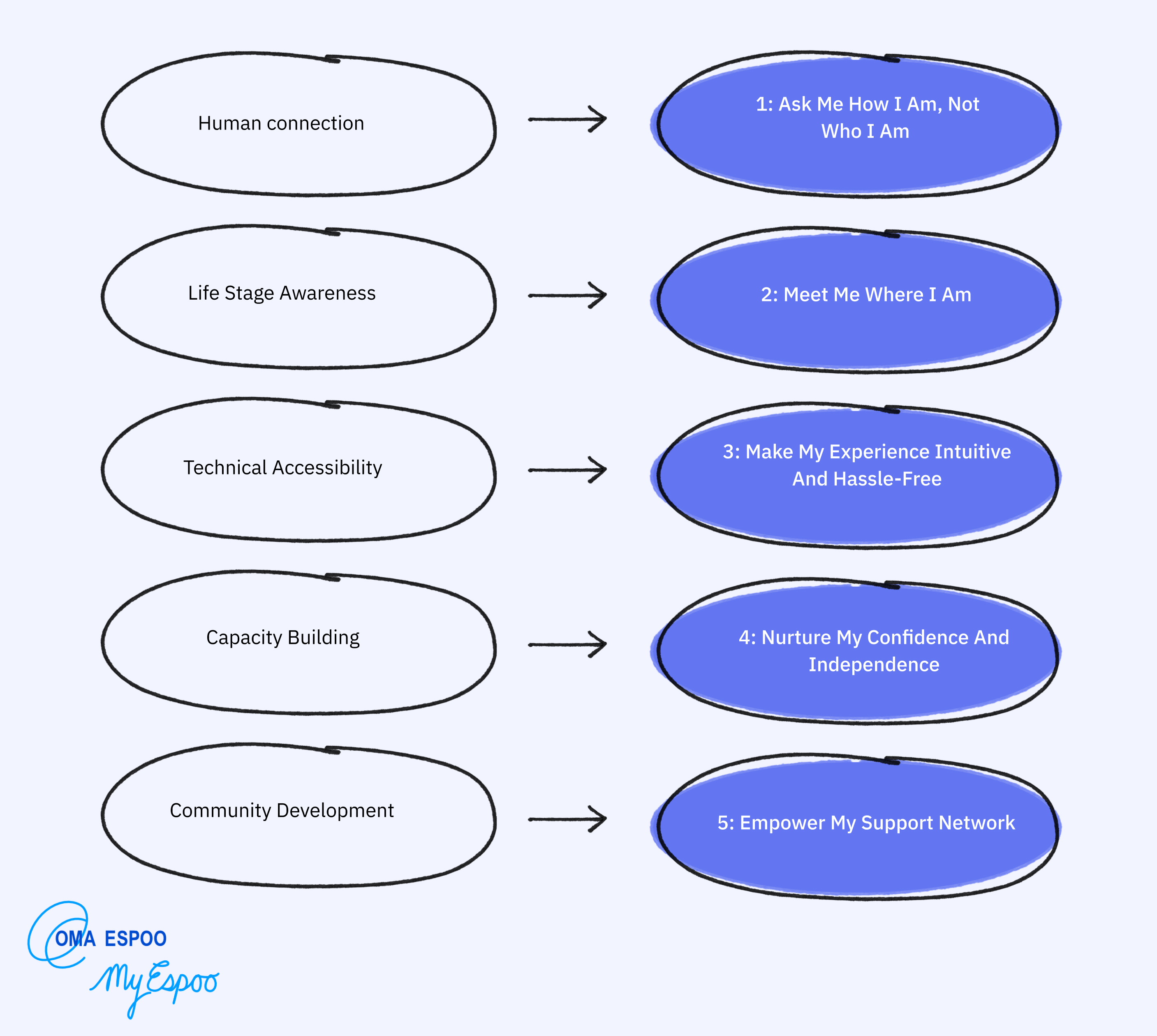
Principles translated from key insights.
